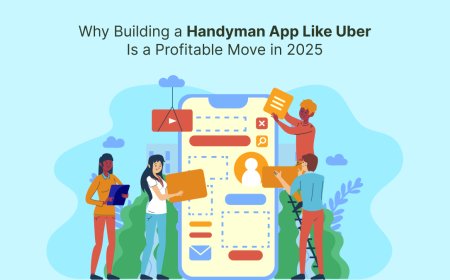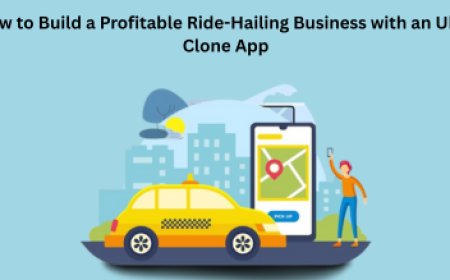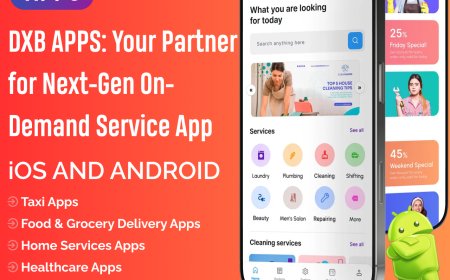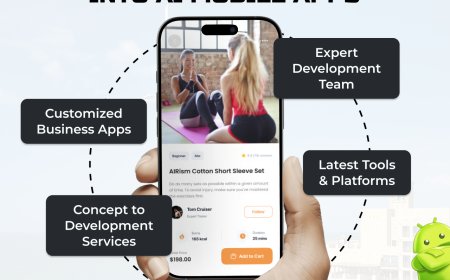How UI/UX Design Impacts User Retention in Dating Apps
UI/UX design improves user retention in dating apps by creating intuitive, engaging, and emotionally satisfying experiences that encourage repeat use.
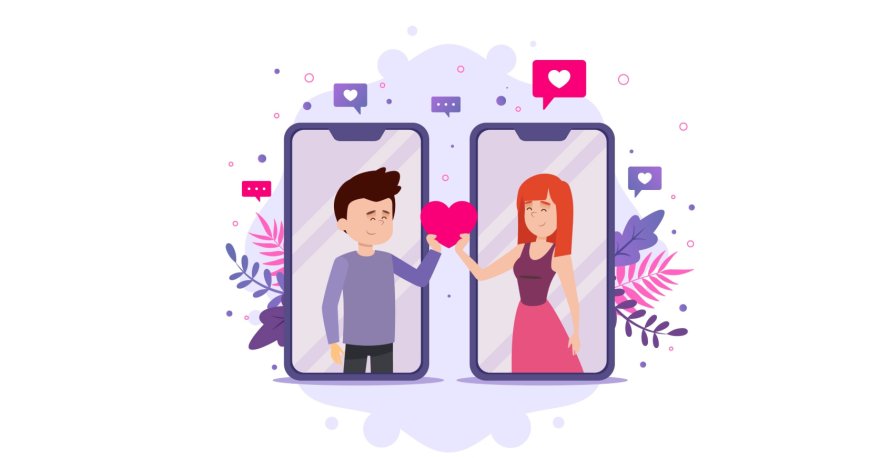
Introduction
Dating apps have become essential tools for forming deep connections with people from different backgrounds and lives. Success depends not just on acquiring new users but also on retaining them over time. The experience users enjoy each time they launch the app is what sets high-performing platforms apart, not just features or user counts. Their level of trust and enjoyment of the platform is influenced by each button they tap, profile swipe, and message they send. How well UI and UX design collaborate to produce clarity, comfort, emotion, and consistency determines retention. By investing in expert UI/UX design services, platforms can ensure users feel comfortable, secure, and enthusiastic, which motivates them to remain involved and engaged.
1. The Influence of First Impressions
Ongoing interaction with an app often gets decided by its first impression. Value is immediately communicated by a contemporary, friendly, and simple interface. Users become significantly less engaged during the installation process if they are presented with confusing menus, out-of-date graphics, or an overbearing layout. Expectations for dependability and enjoyment are set by the visual design. These initial moments determine whether users finish the sign-up process or remove it right away. An emotional draw is produced by powerful images and a seamless onboarding process. Before the user even starts their first match search, subtle hints like dynamic buttons, soft gradients, or amiable microcopy help to establish confidence. Before determining whether the app merits more attention, users are encouraged to stick with it and test out its essential features.
2. Intuitive Navigation Promotes Engagement
Once inside the app, navigation must feel effortless and logical. Users should never feel lost or unsure of how to interact with the platform. Clear tab bars, easy access to matches and messages, and a consistent flow from discovery to interaction all contribute to a sense of control. Confusing menus or buried features trigger user frustration and abandonment. Rather than hiding or overloading features, intuitive UI design ensures each screen offers straightforward progression toward desired actions—like messaging a match or editing preferences. When users feel confident navigating, they are more likely to return regularly. Familiar interaction patterns reduce churn because users don’t need to relearn how to use the app.
3. Personalization Builds Emotional Connection
Personalization significantly elevates user loyalty. When apps adapt to users, they reinforce an emotional bond. Features that allow customization—such as dark mode, profile layout selection, or tailored prompts—show users that the platform recognizes and values their individuality. Similarly, intelligent suggestions based on location, interests, or past activity create relevance. Users feel seen, not just like anonymous profiles in a database. Emotional connection cements loyalty. A user who sees relevant matches, thoughtful design, and personalized options is more likely to engage daily. Over time, this emotional investment turns curiosity into habit—a strong deterrent against abandoning the app.
4. Consistency Across Devices
Users expect a seamless transition from mobile to tablet to desktop. A design that shifts dramatically between devices erodes confidence. By aligning fonts, button placement, and iconography across platforms, users feel grounded regardless of device. Sessions should reliably resume at the same spot across screens. Password entry, match lists, and messaging style should feel familiar wherever the app is accessed. This consistency builds competence and reduces cognitive load—allowing users to focus on connections rather than technical details. When apparatus feels polished and stable across environments, users grow more attached and trusting.
5. Microinteractions That Delight
Delightful microinteractions have a long-term emotional impact. Animations on match confirmation, subtle vibrations on swipe, and feedback on messages send all signals that the system is responsive and alive. These moments feel like positive reinforcements—building satisfaction and encouraging more interactions. Haptic feedback from messages, audio cues from likes, and celebratory motions on milestones trigger dopamine responses in users. Over time, these micro-interactions make the app feel like it understands and celebrates user actions. This emotional resonance fosters loyalty because users associate the platform with enjoyable moments—not just functionality.
6. Emotional Design for Trust and Comfort
Emotional resonance is the foundation of dating app loyalty. Warm visuals, inclusive imagery, and kind-toned copy reassure users at every step. Microcopy that shows empathy—like “Take your time setting up your profile” or “You’ve got a new match—send a hello!”—helps users feel heard and supported. Welcoming tones also reduce anxiety around vulnerable actions. When the experience feels personalized, respectful, and safe, users trust the platform more deeply. Trust leads to increased sharing, more activity, and a greater likelihood of recommending the app to friends. Emotional design anchors these behaviors through tone, visuals, and interaction.
7. Minimizing Cognitive Load
When users are overwhelmed, they abandon the platform. Excess options, dense text, and complicated workflows contribute to mental strain. That’s why good UX breaks features into clear, manageable steps. Instead of showing extensive settings at once, progressive disclosure reveals options gradually based on context. Grouping related features and reducing on-screen clutter allows users to breathe. This clarity preserves focus on the core activity: interacting with matches. Consistent spacing, typography, and workflows help users feel competent. Reduced mental load allows users to use the app longer and more happily.
8. Seamless Performance Through Design
A fluid experience depends on fast and responsive UI design. Delayed screen changes or laggy interactions make users feel ignored. Designers address this by using techniques such as skeleton screens during load, asynchronous image loading, and lightweight components. Memory management and UI feedback loops ensure that taps and swipes produce immediate response—even when the network is slow. The result is a sense of speed and responsiveness that signals respect for the user’s time. Consistently smooth performance wearing down memory lowers frustration and increases app loyalty.
9. Familiar UI Patterns Prevent Drop Off
Most users appreciate familiarity in interface patterns. Swipe gestures, bottom tab bars, and recognizable icons help users navigate without a learning curve. When UI behavior mirrors commonly used apps, users instantly understand what to do. This predictability reduces drop-off because users don’t feel lost. It also encourages faster onboarding and more confident interactions. Familiar design choices make the platform feel like a polished experience rather than a confusing novelty. Retained users stay longer because the friction to getting comfortable is low.
10. Smart Notification Strategy
Good notifications help bring users back to dating apps and keep them interested. Alerts like new matches, unread messages, or events nearby can make people want to open the app again. But if notifications come too often or feel random, users may turn them off or even uninstall the app. That’s why it’s important to send messages at the right time and make them feel personal. Giving users control over how often they get alerts also helps. Simple and helpful messages like “You’ve got a reply—say hi!” or “It’s been a couple of days since your last message” can remind users to return without bothering them.
11. Transparency and Security Build Trust
Privacy is vital. Users need to know who they’re interacting with and that their data is safe. Visual signals like verification badges, secure connection icons, or privacy settings reinforce transparency. Easy access to consent, reporting, and settings ensures users feel control. When interface design highlights these elements clearly, user confidence grows. This confidence encourages continued interaction and sharing. Users who trust your platform stay active because they know their concerns are taken seriously.
12. Visible Safety Features Encourage Use
Dating apps must proactively guide respectful interactions. Well-placed reporting and blocking features make users feel protected without degrading the experience. Simple actions like swipes or taps should not expose vulnerabilities. Designs that allow users to assert boundaries quickly increase emotional safety. Confirm dialogs on the first message or location sharing offer thoughtful protection. Users who feel safe and respected naturally spend more time on the platform—and recommend it to others.
13. Onboarding Experience Shapes Retention
A thoughtful onboarding sequence makes the difference between a new user feeling confident or confused. Interactive guidance, soft progress calls, and easy editing choices empower users. They don’t want to feel forced through setup or lost later. Highlighting core features by showing benefits rather than text helps users understand the app’s value. Skip options and tooltips give users freedom to explore without feeling lost. A user that understands the app and finishes setup is far more likely to log in consistently.
14. User Journeys That Evolve
Users grow with the app. New users want quick matches. Experienced users want deeper insights. Design must evolve along this journey. Highlighting milestone achievements can give a sense of progress. Advanced tools can be phased in after the user has gained experience. Adapting copy, interface elements and workflows to reflect skill progression reduces boredom and frustration. Evolving user journeys hook users at every stage—helping them invest for the long haul.
15. Consistent Brand Identity That Resonates
Brand cohesion is more than logo placement. It is about identity. Colors, visuals, tone of voice, and animations all work together to express the app’s character. When every page feels true to the brand story, users feel like part of a community, not just customers. A dating app with vibrant transitions, characteristic iconography, and emotional resonance strengthens user affiliation. When people feel connected to a brand’s ethos, they’re more likely to return, refer, and invest.
Conclusion
The attentiveness of each connection is crucial to maintaining users on dating apps. Users' feelings, actions, and interactions are influenced by the entire experience, from the initial tap to innumerable swipes. Because it leads users through the app in a natural way, a clear, simple interface fosters trust, emotional connections, and habits. The design promotes recurring use when it is sympathetic, responsive, and consistent with the tone of the brand. Purchasing excellent UI/UX design is not solely a matter of taste. Increased user pleasure, enduring loyalty, and overall app growth are all facilitated by this fundamental tactic.
Note- If anyone is looking for expert UI/UX design services, they should connect with Dev Story, which offers top-tier UI/UX design along with custom app development, on-demand app development services, cross-platform development, and more.























